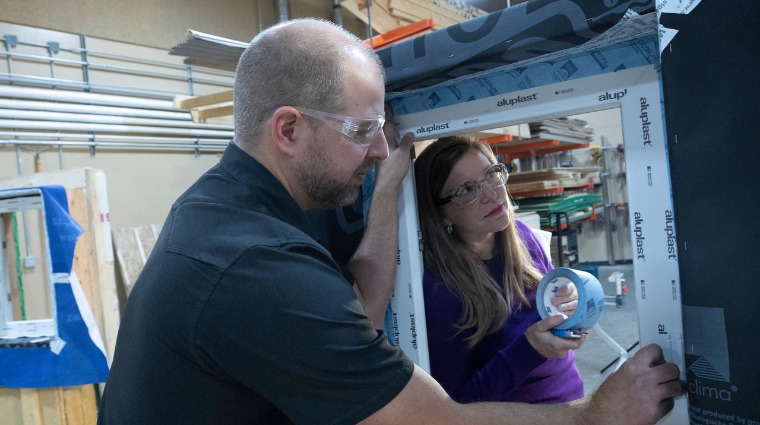
Looking into the future of building construction poses a challenge: how efficient is the average Saskatchewan house?
“We wanted to try and quantify standard building practices right now and we could certainly describe that in terms of the materials we’re using, the practices we’re using,” said Angela Deans. “What we weren’t able to quantify was the energy performance of these buildings.”
Deans, program head for Saskatchewan Polytechnic’s Architectural Technologies program in Moose Jaw, teamed up with Ryan Hooyenga, program head of the Carpentry program, to do the research to find out. Hooyenga has long experience as a journeyperson carpenter and is involved in the technical training of carpenter apprentices. He has provided an invaluable practical perspective to the research.
While a formal literature search turned up little current information on energy-efficient housing in Saskatchewan, Hooyenga and Deans did locate an industry partner in Saskatoon in the business of energy audits.
“They’ve been doing energy efficiency testing as part of various programs for a very long time; decades,” Hooyenga said. It was a start.
Saskatchewan’s residential building codes recently added mandatory energy performance benchmarks and the federal government has made a commitment that all new homes built in Canada must be net zero by 2030. This means the home must produce as much energy as it uses.
“So how do we know how far we need to go to get to net zero? We need to see if we can find more data,” Hooyenga said.
Deans explained students must be prepared with knowledge and skills for today and to be able to adapt to the workplaces of the future. It’s a delicate balance.
“We are careful not to move so far ahead of industry that when our students go out to the workforce they’re unprepared for the reality of where things are,” she said. “They are going to have long, 30-year careers, so we want them to be ready.”
This literature review was completed on behalf of Sun Ridge Residential.
Sask Polytech’s applied research partners have access to exceptional facilities and faculty expertise, funding for research and development and a wide network of connections. By partnering in innovation and testing Sask Polytech enables companies to capture new opportunities, solve everyday problems and contribute to economic growth and job creation in Saskatchewan.
Visit saskpolytech.ca/research for more information on Applied Research and Innovation at Sask Polytech.
Published July 2020.

